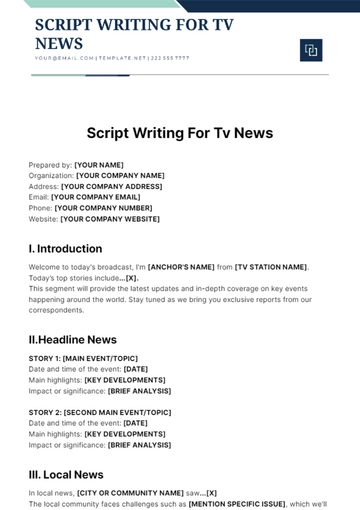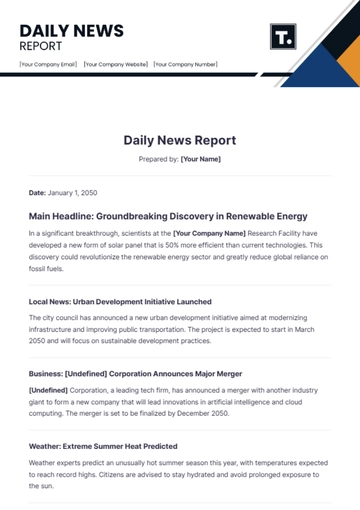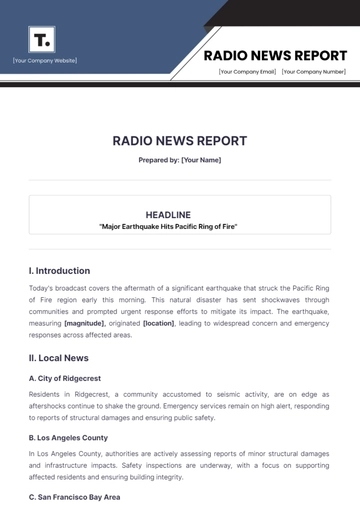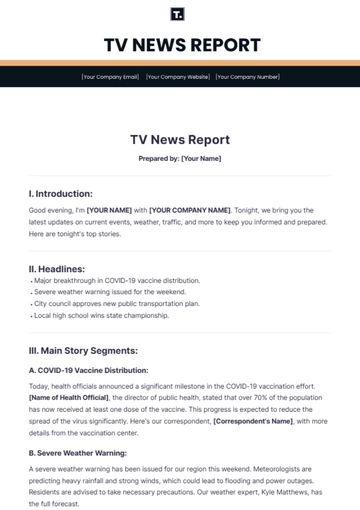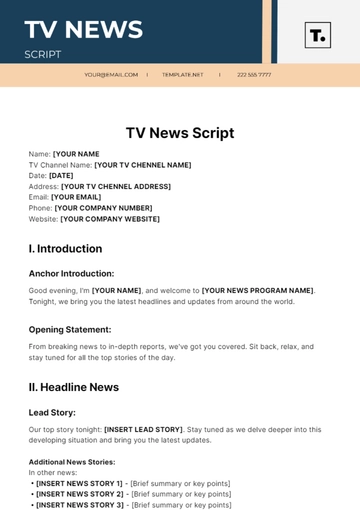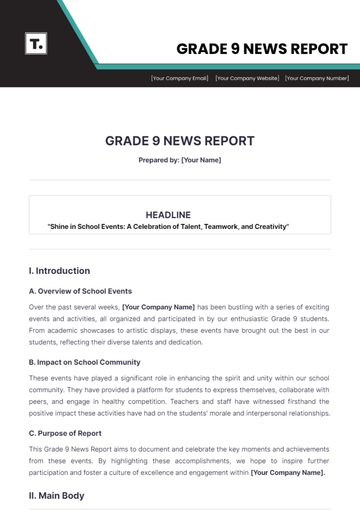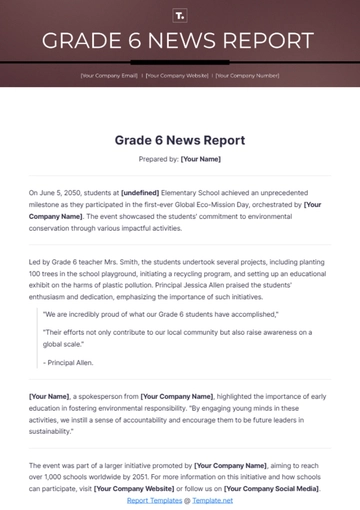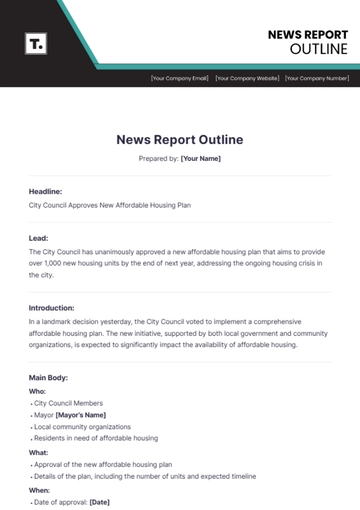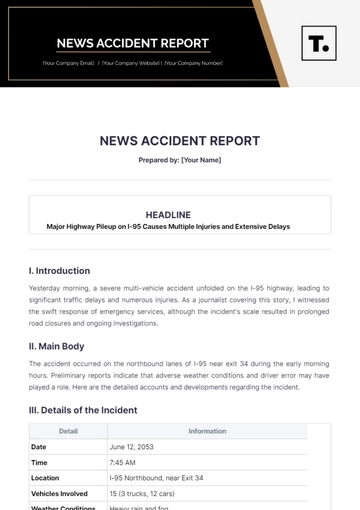Free News Anchor Criteria

Prepared by: [Your Name]
Date: [Current Date]
Introduction
The role of a news anchor is pivotal in delivering timely, accurate, and engaging news to the public. Anchors must possess a unique blend of skills and attributes to effectively communicate news, maintain audience trust, and handle the fast-paced demands of the broadcast industry. Evaluating news anchors involves assessing various criteria that reflect their qualifications, performance, and suitability for the role.
Purpose
The purpose of this criteria document is to establish a comprehensive set of guidelines and standards for evaluating news anchors. It aims to provide a clear and objective framework for assessing candidates' abilities in communication, presentation, research, and other key areas essential for effective news delivery. This document serves as a tool for ensuring that news anchors meet the high standards required for maintaining the integrity and quality of news broadcasts.
Scope
This document outlines the criteria used to evaluate news anchors in various aspects of their role. It includes guidelines on communication skills, presentation abilities, research and writing skills, technical proficiency, experience, and ethical standards. The scope encompasses all facets of a news anchor's performance and qualifications, from their on-camera presence to their ability to handle technical equipment and maintain ethical practices. The evaluation process described herein applies to current and prospective news anchors across different news organizations and broadcast settings.
Criteria Table
Criteria | Description | Weight | Score |
|---|---|---|---|
Professional Experience | Years of experience working in broadcast journalism, including roles in news reporting, editing, or production. | 25% | 4 |
Communication Skills | Clarity, articulation, and the ability to engage the audience effectively while delivering news. | 20% | 5 |
Journalistic Integrity | Commitment to ethical journalistic practices, objectivity, and accuracy in reporting. | 15% | 5 |
On-air Presence | Confidence, charisma, and overall on-screen demeanor appeals to viewers. | 15% | 4 |
Technical Skills | Proficiency with teleprompters, live reporting, and familiarity with newsroom technology and software. | 10% | 3 |
Adaptability | Ability to handle breaking news, adapt to changing situations, and think on their feet during live broadcasts. | 10% | 4 |
Viewer Feedback | Ratings and feedback from viewers, reflecting their engagement and satisfaction with the news anchor's performance. | 5% | 3 |
Weight: Indicates the relative importance of each criterion in the overall evaluation.
Score Descriptions:
1 (Poor): The candidate demonstrates significant deficiencies in this area.
2 (Below Average): The candidate shows some capability but requires substantial improvement.
3 (Fair): The candidate meets basic expectations but has notable areas for development.
4 (Very Good): The candidate shows strong proficiency with minor areas for improvement.
5 (Excellent): The candidate excels in this area, demonstrating top performance and skill.
Evaluation Process
Initial Screening
Review resumes, cover letters, and portfolios to evaluate candidates' experience and qualifications. Conduct preliminary interviews to assess basic communication and presentation skills.
Skills Assessment
Assess communication skills by evaluating clarity, enunciation, and fluency through simulated news delivery. Evaluate presentation skills by observing on-camera presence and professionalism. Test technical skills with news production tools through practical demonstrations.
Performance Evaluation
Observe real-time news delivery to gauge accuracy, audience engagement, and handling of live situations. Review written news scripts and research assignments for quality and depth.
Feedback and Ratings
Collect and analyze feedback from viewers and social media to measure effectiveness and audience engagement. Obtain feedback from colleagues and team members to assess interpersonal skills and collaboration.
Ethical and Professional Standards
Review adherence to journalistic ethics, including integrity and impartiality. Evaluate responses to ethical scenarios to ensure adherence to professional standards.
Scenario-Based Evaluation
Conduct simulations or role-playing exercises to assess adaptability, problem-solving skills, and composure under pressure.
Final Review and Recommendations
Compile and analyze results from all evaluation areas, including performance metrics, feedback, and ethical adherence. Convene a review panel to discuss findings and make recommendations regarding the candidate’s suitability for the role.
- 100% Customizable, free editor
- Access 1 Million+ Templates, photo’s & graphics
- Download or share as a template
- Click and replace photos, graphics, text, backgrounds
- Resize, crop, AI write & more
- Access advanced editor
Discover the News Anchor Criteria Template on Template.net—your ultimate solution for streamlined news anchor evaluations. Fully customizable and editable in our AI Editor Too, this template allows for seamless adjustments to fit specific needs. Enhance your newsroom’s efficiency with a professional, editable template that adapts effortlessly to various criteria and preferences.







